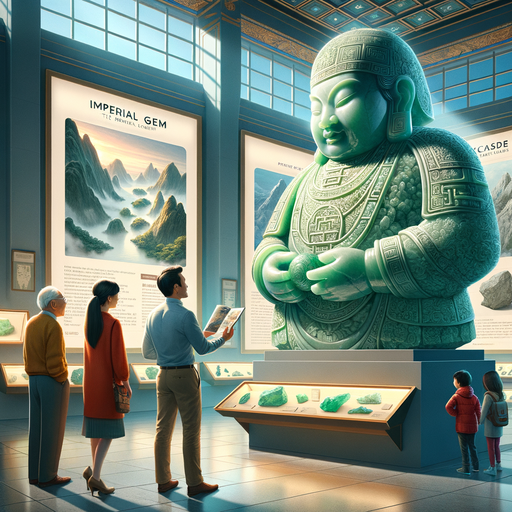Jade The Imperial Gem
A journey through the rich cultural history and significance of jade in the world of gemstones.

Introduction
Jade, often referred to as the “Imperial Gem,” has a rich cultural history that spans thousands of years. This remarkable gemstone has been cherished for its beauty and symbolic significance across different civilizations, most notably in China and Mesoamerica.
History and Cultural Significance
China: The Land of Jade
In ancient China, jade was revered as the “Stone of Heaven” and symbolized purity, grace, and moral integrity. It was also associated with longevity and immortality, making it a popular material for creating artifacts and ceremonial objects.
“Jade is like virtue and its brightness represents heaven.” - Confucius
Mesoamerica: The Sacred Stone
In Mesoamerican cultures, jade had a religious and symbolic significance. It was considered more valuable than gold. Ancient Mayans and Aztecs used jade for making masks, statues, jewelry, and even weapons.
Jade in The Modern World
Today, jade continues to be a highly desired gemstone. Its deep connection with the past and its striking beauty make it a prized possession in jewelry collections worldwide.
| Type of Jade | Description | Primary Regions |
|---|---|---|
| Nephrite | Typically green, cream, or white | China, Russia, New Zealand |
| Jadeite | More vivid colors, higher value | Myanmar, Guatemala |
Jade Mining
Jade mining is a complex process that requires both technical expertise and an understanding of the gem’s geological formation. Mines are often located in remote areas, where miners must extract the gemstones carefully to maintain their quality. Here you can find more detailed information about the jade mining process.
Conclusion
Jade, the “Imperial Gem,” is an epitome of cultural fusion. Its rich cultural history, coupled with its enduring beauty, has ensured its continued significance in the world of gemstones. From ancient civilizations to modern-day jewelry enthusiasts, the allure of jade continues to captivate the hearts of people around the globe.